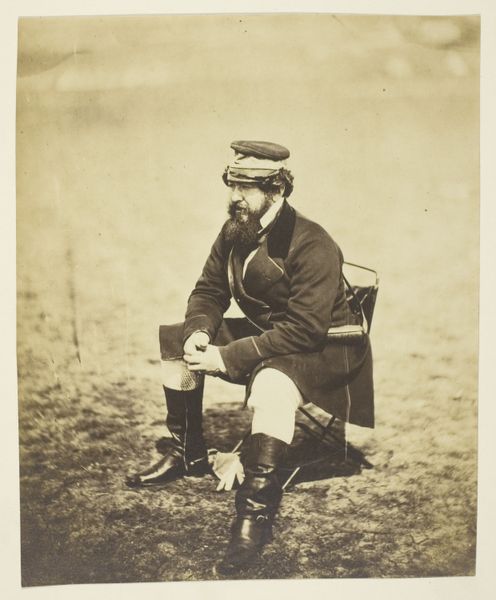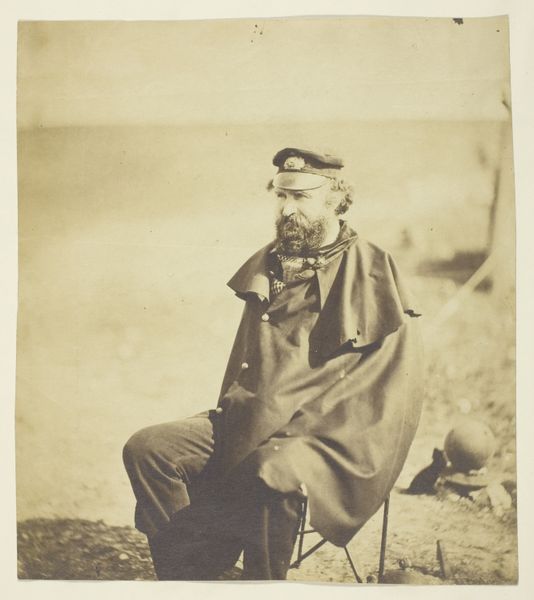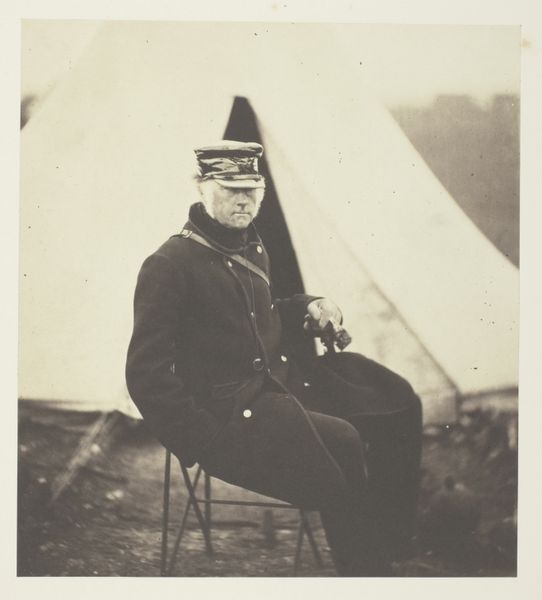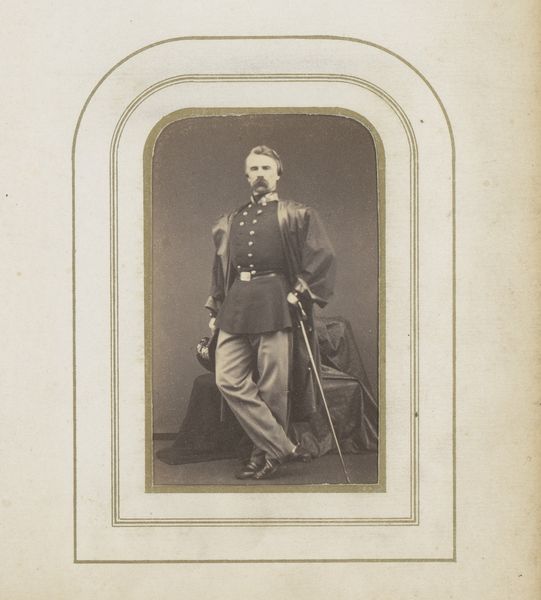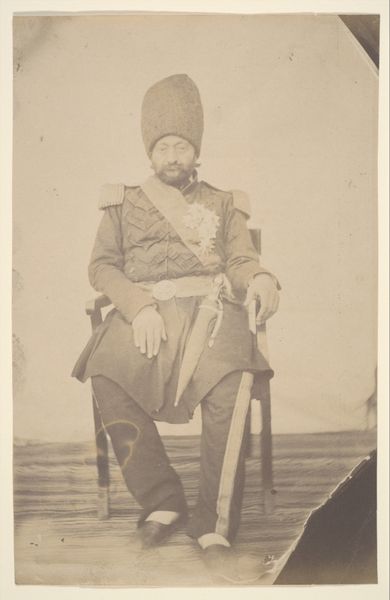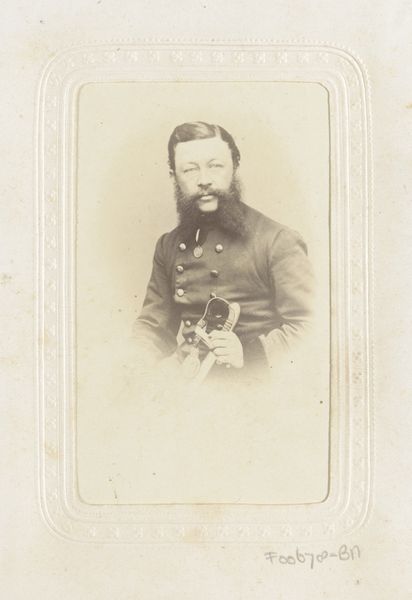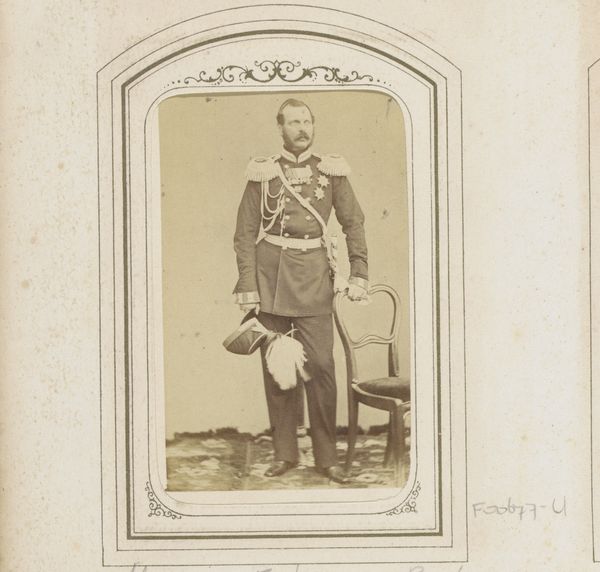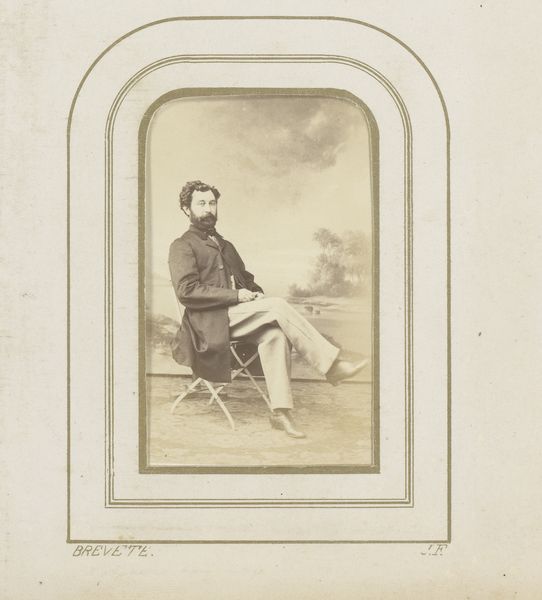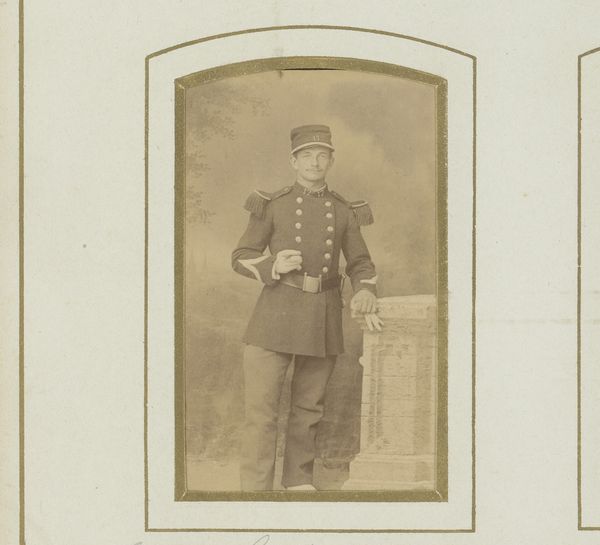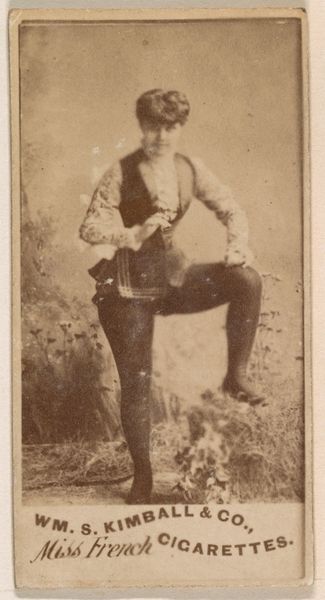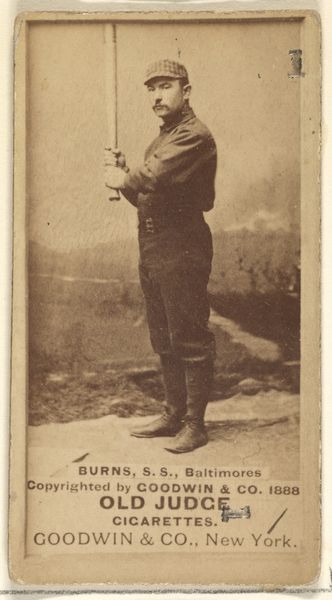
Sir John Miller Adye (1819-1900), General; taken at the Crimea 1855
0:00
0:00
print, daguerreotype, photography
#
portrait
# print
#
war
#
daguerreotype
#
photography
#
genre-painting
#
realism
Dimensions: 19.9 × 15.8 cm (image/paper); 27.2 × 20.4 cm (mount)
Copyright: Public Domain
Editor: This is a photograph from 1855 by Roger Fenton, titled "Sir John Miller Adye (1819-1900), General; taken at the Crimea". It’s a print made using a daguerreotype. There's a stoic weariness in his gaze. What does this image tell us about the Crimean War and its depiction? Curator: Fenton's Crimean War photography, including this portrait, presents a fascinating study in image management and the politics of representation during wartime. This image, in particular, with its focus on a high-ranking officer, reveals a deliberate attempt to portray the British military in a respectable, even noble, light. Editor: It almost feels…posed. Was Fenton intentionally avoiding the harsh realities of war? Curator: Precisely. Unlike later war photography, Fenton’s work during the Crimean War, including portraits like this, was carefully curated. Think about the technical limitations of the time, yes, but more importantly, the sociopolitical context. He was commissioned, wasn’t he? Consider what that means for whose stories get told. Editor: So the lack of graphic imagery was less about inability, and more about the social pressures and expectations placed upon him as a photographer working during war? Curator: Absolutely. Fenton's photographs circulated widely in Britain. His sanitised version of the war bolstered public support for the conflict by not depicting the sheer brutality experienced by soldiers on all sides, or its mismanagement. It's about who gets remembered and how. Consider, whose voices are missing? Editor: That’s a really important point. I hadn’t thought about it in terms of constructed narratives and missing voices. Curator: It shows how images are constructed and circulated and what ends they serve, shaping public perception and even the historical record itself. A single picture speaks a thousand curated words.
Comments
No comments
Be the first to comment and join the conversation on the ultimate creative platform.
